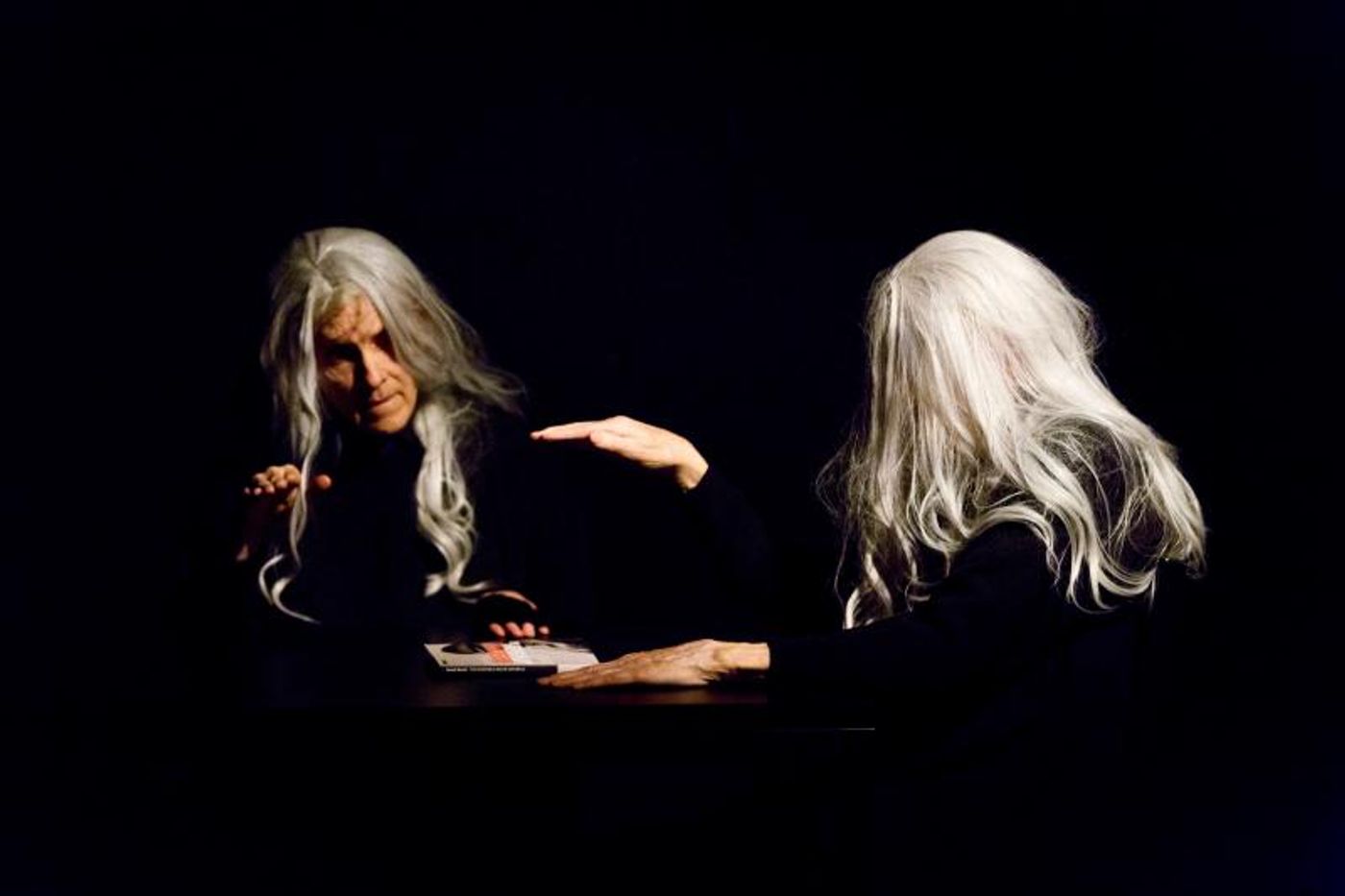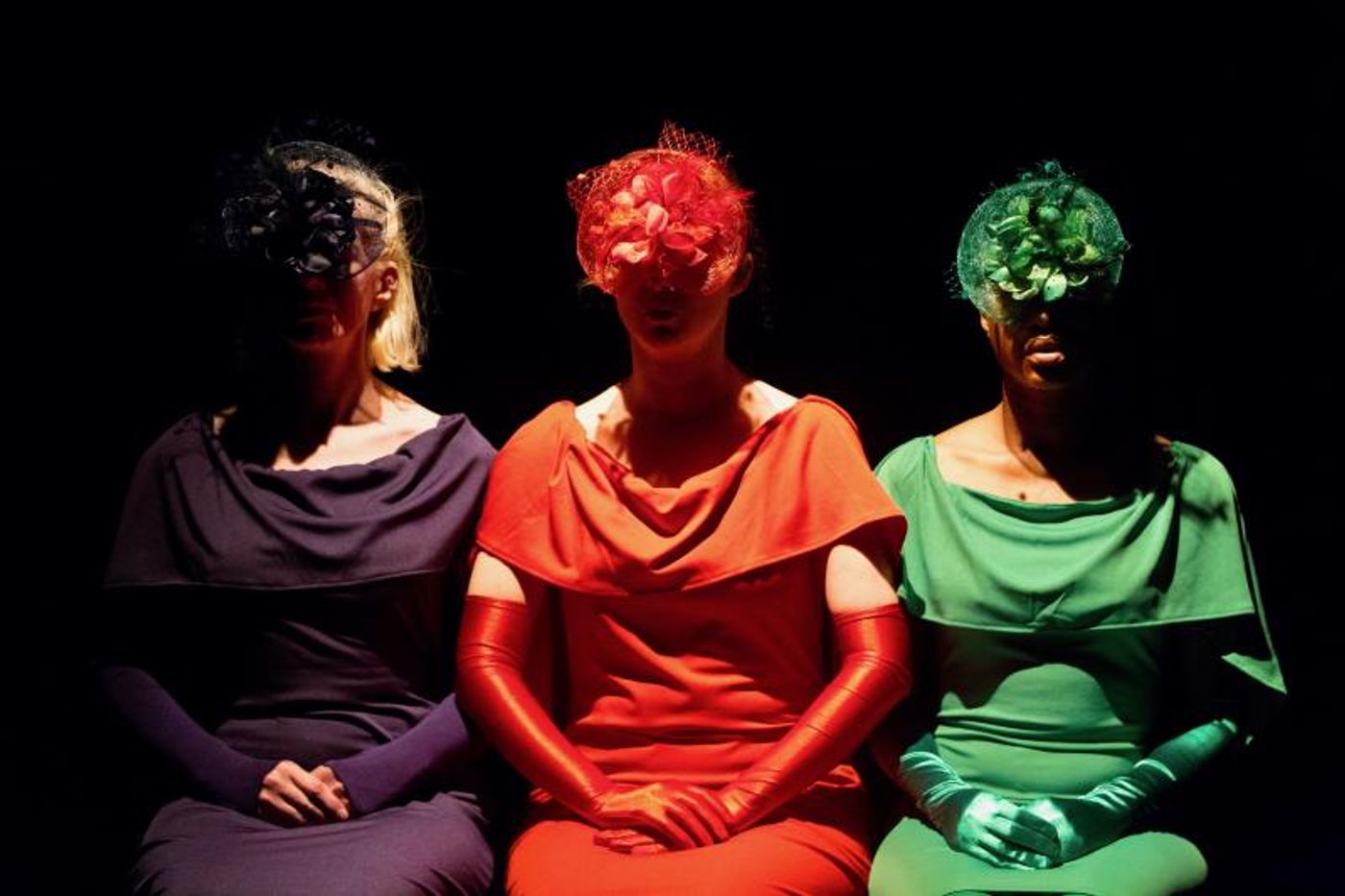Review: BECKETT TRIO, PART 2 at Scena Theatre

in Beckett Trio, Part 2 (Jae Yi Photography)
Ohio Impromptu
Scena Theatre's Beckett Trio, Part 2 opens with Ohio Impromptu. Two men, "as alike in appearance as possible" sit at a table, a black bound book and black wide-brimmed hat set between them. The atmosphere is somber and dream-like. We are thus pulled into the world of Samuel Beckett. As with all three pieces performed in this production, identity and story are up for debate. Most importantly, the audience is left to wonder about the relationships involved in each piece. In Ohio Impromptu, we are left to wonder if we are seeing versions of the same person, mirror images, or the respective consequence of roads not taken. The play revolves around the grieving process, but the details are sparse and much is left to the audience's imagination. The Reader ends on the phrase, "Nothing is left to tell", which may be true, but there is plenty left to feel.
Listener Kim Curtis / Reader Buck O'Leary
Come and Go

and Ellie Nicoll in Beckett Trio, Part 2
(Jae Yi Photography)
An extremely rare Beckett piece that features only women, Come and Go is quite nearly the perfect play. The script is a mere 121 words, but, as with much of Beckett's work, the life of the play is in the spaces between. Scena's version mainly adheres to Beckett's original notes on staging, positioning, and delivery. Lighting Designer Jonathan Alexander keeps the focus tight, allowing the three actors to execute their entrances and exits in the close black box theatre space. Costume Designer Mei Chen's use of fascinators, rather than a larger hat, to obscure each actor's face, bows to current fashion, while still maintaining their anonymity and the mystery regarding each one's story. The heavy silence that Beckett strove for with this piece is somewhat lost in the small space. With the audience so close to the action and a lack of insulation from outside noise, the effect that those 121 words might otherwise have is diminished, but this in no part takes away from the performances.
Vi Jen Bevarelli / Flo Ellie Nicoll / Ru Lewshá-Camille Simboura

(Jae Yi Photography)
Catastrophe
The final piece in this trio, Catastrophe, was commissioned in 1982 and dedicated to the imprisoned Czech author and political dissident, Václav Havel. What Come and Go lacks in actual dialogue, Catastrophe more than makes up for it, and yet, inarguably the central figure, the Protagonist, is silent throughout. Evaluated, poked, and prodded by the Director and the Assistant, the Protagonist endures this indignity, calming submitting to their adjustments. It is only in the final moment, when he dares to raise his head, do we catch a full glimpse of his face. Kim Curtis, as the Protagonist, holds the audience in rapt attention; we cannot look away from his humanity and his defiance. Beckett asks us to consider how often we do look away, how often we are the Assistant mindlessly enacting the whims of a Director. It is a message that is as relevant today as it was in 1982.
(Interesting side note: In the David Mamet-directed production of Catastrophe for the Beckett on Film project, Harold Pinter plays the Director. Some of his works can be seen in repertory with Beckett Trio, Part 2 on alternating nights.)
Assistant Jen Bevarelli / Protagonist Kim Curtis / Director Buck O'Leary
Director & Artistic Director Robert McNamara / Sound Designer Denise Rose / Lighting Designer Jonathan Alexander / Set Designer John D. Antone / Costume Designer Mei Chen / Fight Director Paul Gallagher / Stage Manager Mavonte Johnson / Assistant Director Anne Nottage
Scena Theatre's Beckett Trio, Part 2 runs through May 5, 2019, in repertory with Pinter Rep, at the Atlas Performing Arts Center. Run time is approximately 70 minutes with no intermission. For more information and to purchase tickets, please visit http://scenatheatre.org/
Reader Reviews
Videos

